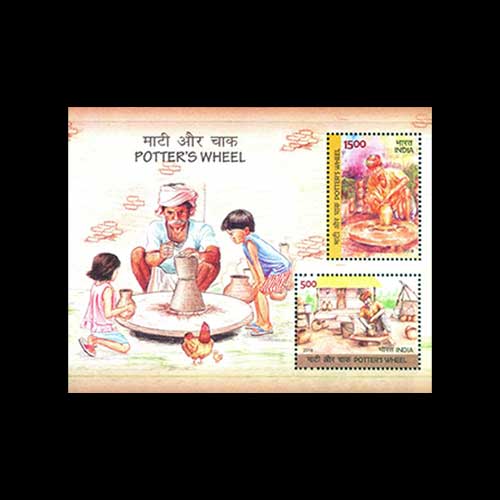Fascinating Archaeological Facts on Postage Stamps - 81
2025-08-06 Wed
Pottery is widely recognized as the 'Alphabet of Archaeology' due to its remarkable durability and the continuity it demonstrates over time. As a vital aspect of everyday life, pottery provides significant insights into a society’s Cultural values and Traditions. It plays a crucial role in interpreting the dynamics of trade, manufacturing practices, and artistic expressions. In instances where other datable artifacts, such as coins or inscriptions, are unavailable, archaeologists often rely on pottery to elucidate the material culture of a site. Additionally, the invention of the wheel has notably advanced #craft Production technology, particularly through the development of potter's rotational devices and wheels.The relationship between relative dating and ceramic cultures is deeply intertwined. For seven to eight decades, this practice has formed the backbone of Indian archaeology and research. In contemporary studies, the field of ceramics has evolved significantly through the application of scientific methodologies. Techniques such as lipid analysis and organic residue analysis are facilitating a deeper understanding of Historical contexts.
Nevertheless, the origins of pottery continue to be a subject of scholarly debate. Warren E. Cox, in his work "The Book of Pottery and Porcelain" (1970), posits that humans may have created clay vessels as early as the Paleolithic period, potentially even prior to mastering Stone -cutting techniques. A study conducted by Craig et al. in 2013 suggests that radiocarbon dating from archaeological excavations at Xianrendong Cave in #Jiangxi Province, #China, indicates that ceramic technology may date back approximately 20,000–19,000 BP. On the other hand, H.D. Sankalia associates pottery with the sedentary lifestyle of the post-Mesolithic period, arguing that it became a significant element of Indian culture only during the Neolithic period when communities began to establish permanent settlements.
Throughout the Neolithic period, the emergence of agriculture necessitated the creation of storage jars and Cooking pots. During this era, pottery was predominantly handmade, crafted from rough, textured clay, and often decorated in hues of black, white, GREY, or red. By the Bronze Age, pottery production advanced substantially, with both handmade and wheel-thrown styles becoming prevalent. Potters acquired expertise in pyro-technology, effectively managing the fire and temperature within kilns while manipulating oxygen levels for optimal results. The pottery produced after the Harappan period is particularly noted for its distinctive black and red painted designs.
The pottery discovered at Indian protohistoric and early historic sites reveals a rich diversity of unique styles, prominently featuring the Ochre Colored Pottery (OCP), Painted Grey Ware (PGW), Black Slipped pottery (BSW), Northern Black Polished Ware (NBP), and Black and Red Ware (B&R Ware). While these pottery forms are found across various regions of India, they are conspicuously absent in North East India, where separate pottery styles, such as Kaolin ware—also known as Ambari ware—emerged independently in ancient Assam.
On 26 January 2018, India Post commemorated this rich heritage by issuing two stamps and a #miniature sheet titled "Potter's Wheel," celebrating the art of pottery and the skilled artisans behind it.
Latest News
-
Ghiyath Shah as Heir Apparent
2025-09-25 ThuGhiyath Shah was the ruler of the Malwa Sultanate, reigning from 1456 to 1500. From 1456 to 1469, he...
-
Malwa Sultan Mahmud Shah Silver Coins
2025-09-11 ThuMalwa Sultan Mahmud Shah minted silver coins in round and square flans. <br><br> For round coins,...
-
Malwa Sultan Mahmud Shah Billon coin
2025-08-26 TueMalwa Sultan Mahmud Shah's billon coins followed three weight standards: 100 rati, 96 rati, and 80 r...
-
Fascinating Archaeological Facts on Postage Stamps - 91
2025-08-23 SatRhinoceros is one of the oldest land mammal species existing in India. There are five species of rhi...
-
Fascinating Archaeological Facts on Postage Stamps - 90
2025-08-23 SatUthiramerur, a Village in Kanchipuram, Tamil Nadu, is notable for its Temple inscriptions that descr...

